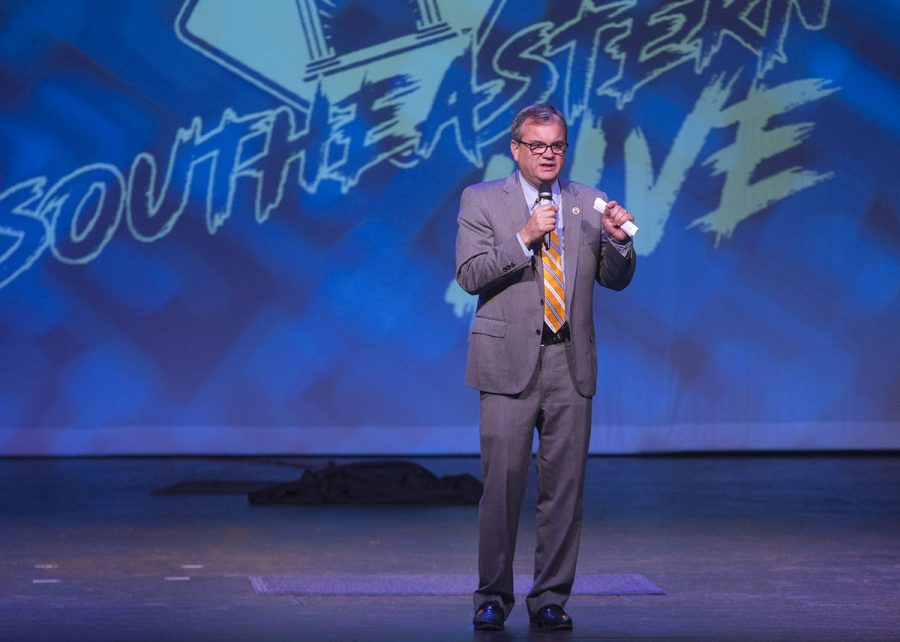President’s Corner: Technology and communication – then and now
By Dan Hoke
Southeastern president Sean Burrage addresses the crowd at SE Live, a new student recruitment event. Photo courtesy of Southeastern University Communications.
November 17, 2016
The news that The Southeastern transitioned from a traditional printed newspaper to an online platform this semester gave me pause to think about just how much technology has changed our world over the last quarter-century.
I graduated from the University of Oklahoma in 1990 and our primary means of communication was verbal – you know, talking to one another. That’s how we shared news, ideas and opinions. No texting. No email. No Facebook. No Twitter. But we did have a revolutionary state-of-the-art gizmo called a fax machine (if you don’t know what that is, Google it!).
We also relied on telephones (now called landlines – I didn’t have a cellphone until 1994) and the U.S. mail (postage stamps were 25 cents in 1990).
As far as receiving news, we faithfully read the ink-stained daily newspaper, watched the 6 o’clock news on TV (although a rather new cable outfit called CNN did provide 24-hour news coverage), and listened to non-satellite AM/FM radio.
But ‘’breaking’’ news travelled rather slowly back then, far different from today’s “news as it happens’’ reporting via advanced technology. Nowadays, not only is the reporting of news immediate, but so is the reaction from the consumer (see recent election).
Pre-Netflix, we utilized bulky VCR players (go to Google again) to watch rented movies from the local video store and to record and play back our favorite TV shows.
Technology has even changed the way we teach and learn with the popularity of internet research, online courses, TV instruction, etc.
Where we go from here is uncertain, but it is certainly exciting to be living in a world that benefits from such innovation and creativity.

